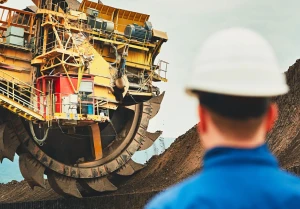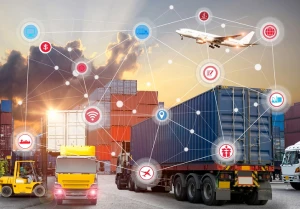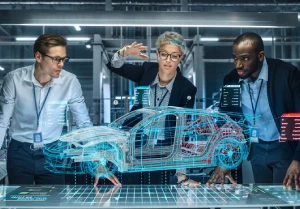Digital transformation in the mining industry has brought numerous advancements and challenges, with several important lessons learned. These lessons can help guide future efforts to enhance efficiency, safety, sustainability, and competitiveness in the sector. Here are the key lessons learned:
- Data Integration and Analytics Drive Efficiency
- Lesson: Centralizing and integrating data from various sources (e.g., sensors, machinery, operations) improves decision-making and operational efficiency.
- Challenge: Mining operations often deal with complex, remote sites and siloed data systems, making integration difficult.
- Takeaway: Mining companies need robust data infrastructure and analytics platforms that can collect and process data from different operations in real-time to optimize productivity, reduce downtime, and improve resource utilization.
- Automation and Remote Operations Enhance Safety and Productivity
- Lesson: Automation technologies, such as autonomous vehicles, drilling systems, and robotic mining equipment, significantly enhance both safety and productivity by reducing human involvement in hazardous environments.
- Challenge: Implementing these technologies requires significant upfront investment and careful coordination to avoid disrupting existing workflows.
- Takeaway: Companies that adopt gradual, well-planned automation strategies achieve both immediate safety improvements and long-term productivity gains, particularly in dangerous or hard-to-reach mining areas.
- Real-Time Monitoring and Predictive Maintenance Reduce Downtime
- Lesson: IoT sensors and real-time monitoring allow for predictive maintenance, which can drastically reduce equipment failure and unplanned downtime.
- Challenge: Initial adoption of predictive maintenance technologies faced resistance due to high costs and concerns over their reliability.
- Takeaway: Over time, the reduction in downtime, lower maintenance costs, and extended equipment life have proven the value of predictive technologies. Investing in real-time monitoring systems helps identify issues before they cause operational delays or safety hazards.
- Sustainability and Environmental Impact Can Be Improved
- Lesson: Digital technologies help mining companies monitor environmental impact, optimize resource use, and meet regulatory requirements more effectively.
- Challenge: Many companies initially focused only on operational improvements, neglecting sustainability, which later became a critical compliance and public image issue.
- Takeaway: Implementing digital tools like real-time emissions monitoring, water management systems, and energy-efficient equipment can improve both sustainability and operational efficiency, creating a competitive advantage in a world of increasing environmental scrutiny.
- Workforce Upskilling is Essential for Digital Success
- Lesson: Digital transformation requires mining workers to have new skills, especially in operating advanced technologies such as AI, data analytics, and autonomous machinery.
- Challenge: Mining companies often faced resistance to change from their workforce, with concerns about job displacement and lack of digital literacy.
- Takeaway: Ongoing workforce training, upskilling, and reskilling programs are critical. Companies need to communicate how digital transformation creates new opportunities and emphasize a shift toward safer, more tech-oriented roles.
- Cybersecurity is a Growing Concern
- Lesson: As mining operations become increasingly digitized, the risk of cyberattacks on critical infrastructure and operational systems grows.
- Challenge: The industry has traditionally focused on physical security, but with increased reliance on digital systems, cyber threats have emerged as a significant risk.
- Takeaway: Cybersecurity must be prioritized, with mining companies implementing strong security protocols, network segmentation, and regular system updates to protect sensitive data and operational systems from cyber threats.
- Digital Twins and Simulation Unlock New Insights
- Lesson: Digital twin technology, which creates virtual models of physical operations, allows companies to simulate scenarios, optimize processes, and improve decision-making.
- Challenge: Building and maintaining accurate digital twins requires significant data collection, system integration, and resources.
- Takeaway: Digital twins offer valuable insights for optimizing mine design, equipment maintenance, and resource extraction. Early adopters have seen reductions in costs and improvements in overall operational efficiency.
- Change Management and Leadership Support are Vital
- Lesson: Successful digital transformation requires leadership commitment and a clear vision that aligns with the company’s strategic goals.
- Challenge: Without strong leadership, digital initiatives may falter or encounter resistance from middle management and the workforce.
- Takeaway: Leadership must actively promote and champion digital transformation, ensuring it’s integrated into the company’s long-term strategy. Clear communication and change management practices help build trust and drive adoption.
- Collaboration Across IT and OT is Essential
- Lesson: Integrating Information Technology (IT) with Operational Technology (OT) is critical for the success of digital transformation in mining.
- Challenge: Historically, IT and OT systems have been managed separately, causing integration issues and missed opportunities for real-time collaboration.
- Takeaway: A collaborative approach that bridges the gap between IT and OT departments ensures smoother implementation of technologies such as IoT, automation, and data analytics across all operational levels.
- Incremental Digital Projects Deliver Quick Wins
- Lesson: Mining companies that start with smaller, targeted digital projects (such as asset tracking, predictive maintenance, or process optimization) often achieve faster results and ROI.
- Challenge: Large-scale digital transformation projects can be costly and complex, making it hard to show immediate results.
- Takeaway: Focusing on high-impact, incremental projects builds momentum and generates buy-in from stakeholders, enabling broader transformation over time.
- Supply Chain Optimization Increases Resilience
- Lesson: Digital tools such as blockchain, AI-powered forecasting, and automated logistics improve transparency and efficiency across the mining supply chain.
- Challenge: The mining industry has a complex and global supply chain, making it vulnerable to disruptions.
- Takeaway: Digitizing the supply chain improves traceability, reduces delays, and increases resilience against disruptions (e.g., pandemics, trade issues, or natural disasters), providing a competitive edge.
- Silos Slow Down Transformation
- Lesson: Many early digital transformation efforts were hampered by organizational silos that prevented effective communication and collaboration across departments.
- Challenge: Different divisions (e.g., operations, IT, HR, supply chain) often worked in isolation, limiting the success of comprehensive digital initiatives.
- Takeaway: Breaking down silos and promoting cross-departmental collaboration is essential for the successful implementation of digital technologies across the mining value chain.
Summary of Key Lessons:
- Data integration and real-time analytics are foundational for optimizing mining operations.
- Automation and remote operations improve safety and productivity, but must be implemented with care.
- Predictive maintenance reduces equipment downtime and lowers costs.
- Sustainability and environmental monitoring are key aspects of digital transformation, enhancing regulatory compliance and public perception.
- Workforce upskilling is crucial to manage the shift toward digital and automated technologies.
- Cybersecurity needs to be prioritized to protect digital infrastructure.
- Digital twins offer valuable insights and process optimization opportunities.
- Leadership support and change management are critical for successful adoption.
- IT-OT collaboration is needed to integrate technology effectively.
- Incremental projects provide quick wins and build momentum for larger transformation efforts.
- Supply chain digitization increases resilience and transparency.
- Breaking down silos fosters collaboration and accelerates transformation efforts.
These lessons highlight the importance of strategic planning, collaboration, and flexibility in implementing digital transformation across the mining industry. Companies that focus on both technological innovation and human capital are better positioned to thrive in an increasingly digital landscape.





